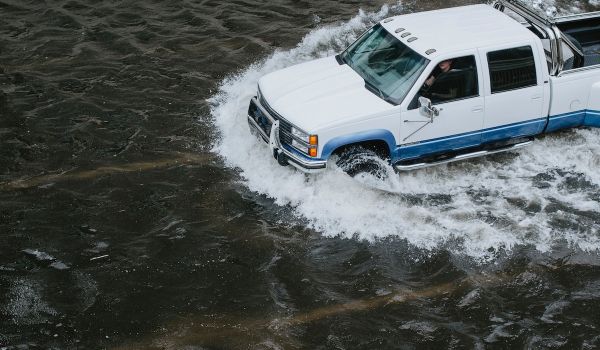Two years ago, the most powerful storm to strike the United States in the last twenty-eight years made landfall on Florida’s Gulf Coast. Its wind speed reached 161 miles per hour, the fourth-strongest on record for a U.S. hurricane, and it raised the level of the Gulf of Mexico by fourteen feet before its eyewall slammed into a laid-back vacation town called Mexico Beach. In a matter of hours, Hurricane Michael ripped up roads, shredded forests, and reduced entire housing blocks to sand-covered slabs.
Media coverage, donations, and volunteerism have lagged in comparison to disasters of its scale. Eight months passed before a federal relief package was signed for the victims of the storm (compared to 10 days after Katrina). Awareness, even within the state of Florida, is so low that the hurricane has been nicknamed “the forgotten Category Five.”
But two years later, many of Michael’s victims are living with constant reminders of the storm. Blue tarps, mangled trees, and leaky roofs are familiar parts of the struggle to recover from the $25 billion of damage left in the storm’s path. And chief among those challenges is a housing crisis. According to the National Low Income Housing Coalition, over 40,000 homes were damaged or destroyed by flooding and wind, and over 1,400 federally assisted rental homes were destroyed or substantially damaged.
A forthcoming study by a team of climate change researchers based in Sweden and The Netherlands dug into the housing data of one small storm-impacted area, Gulf County, trying to identify the most impacted among Michael’s victims. Their results are surprising and highlight grave impacts in lower-income parts of the county that have otherwise gone overlooked. Ultimately, they believe that measuring disaster impacts can be improved — and the recovery process can become more equitable — if similar analyses are used to understand damage in future disasters.
Dr. Chad Boda is one of the lead researchers from the team. Boda is based at the Lund University Center for Sustainability Studies, an interdisciplinary research center in the south of Sweden. But he knows North Florida and he knows hurricanes, having been raised in Flagler Beach, a small town due east on the Atlantic Coast.
When he drove into Gulf County last March, he says, “I wasn’t expecting how widespread the damage really was, because coverage had been very much focused on Mexico Beach and a few coastal areas.”
But the damage that Boda described in the county, which is the smaller, more rural, and less-affluent of the two direct-hit counties, was stark. “First you started to see houses without roofs, and then empty lots, and then it was, just, absolutely ubiquitous. Every single building had the mark of the storm. Certain parts of Port St. Joe, big sections of the city, were just empty lots with nothing but plumbing sticking out of the ground.
The team’s goal was to objectively measure the storm’s housing impacts in Gulf County. It’s part of a larger project to advise the United Nations Framework Convention on Climate Change on how to objectively measure the impacts of disasters as they grow stronger and more frequent.
Resources after disasters typically flow to the people who experience the most impact. In the US, that impact is measured by property loss and monetary damage. Boda says, “When they say it’s a 25 billion dollar disaster, what does that mean? What we have to do is start to peel open that amount of money and say, ‘Where is that coming from?’ And then when we find that chunk that was related to housing losses, we peel that away and we say ‘Where was that?’ And ultimately ask ‘Who is living in these houses?’”
To do the peeling, the team ran several analyses of tax assessment data of 5,668 residential properties from before and after the storm. The first and most traditional analysis looked only at losses of properties’ monetary value. When plotted geographically, this measurement showed that Cape San Blas, the wealthier beachfront area with second homes and vacation rentals, was the hardest hit.
But the results of a second analysis, which looked at how much each neighborhood lost in proportion to what it started with, showed a completely different picture of who was most impacted. “The million dollar house that loses a hundred thousand dollars: that’s only ten percent of the value,” Boda says. “But a fifty thousand dollar house that loses twenty five thousand dollars, that’s fifty percent of the value.” When these results are plotted geographically, Cape San Blas is no longer shown to be the most impacted. Instead, the historically Black and lower-income section of town, North Port Saint Joe, and the inland, rural town of Wewahitchka become the hardest-hit.
The third analysis measured units that went completely vacant after the storm. It found areas with very low levels of monetary damage where a surprisingly large number of housing units were completely lost, which is the worst-case scenario for an area already short on housing and doesn’t bode well for that community’s ability to recover.
In the short term, Boda says, the question of which areas are “hardest hit” has major implications for who is prioritized for aid, whether by volunteers or by large redevelopment grants. “What we’ve drawn attention to are the places that have been more hidden and more silenced in the numbers. They are still facing significant problems, of literally having no roof on portions of a house two years later. And then to hopefully draw attention to where those people are so that they can get the help that they need.”
Gulf County resident Nancy Stuart has come to understand that need on many levels in the two years since Hurricane Michael. Hampered by the slow arrival of federal recovery dollars and hamstrung by the limits of FEMA’s temporary housing program, residents of Gulf County began organizing their own recovery team, which Stuart volunteered for until she became its executive director last year.
The week before we talked, she and a team of volunteers from the organization, called Citizens of Gulf County Recovery Team, were up on a roof in North Port St. Joe, the historically Black area of the county highlighted in the study. She was steadily baking as the Florida sun heated the blue plastic tarp beneath her. The homeowner had been denied FEMA assistance for repairs, and a previously installed tarp had degraded over time.
“Without a solid roof,” she says, “you still have water intrusion and damage to the home. So once we get a roof on, we can start working on doing the repairs to the interior.” Until that happens, the roof must be covered with a tarp, and often it leaks, which increases the damage and prolongs the disaster.
She describes the current moment as a long,painful and dangerous lag between the immediate FEMA response dollars and the arrival of long-term federal recovery dollars. Everything has been exacerbated by COVID-19, which has dried up volunteer streams and devastated the town’s tourism-dependent economy.
She said Boda’s research matches what she sees on the ground. Many low-income homeowners don’t have the funds to pay for repairs up front while they fight with FEMA for more relief, or, she says, “They have a lot of hoops they have to jump through. They are people who aren’t as familiar with the system. Or they get frustrated and lose hope after so many months and years go by.” While the damage costs of these homeowners might be lower in comparison to other damaged homes in the county, the consequences can be more dire because of a lack of other options.
“We’ve got people that are living in seriously unsafe and unhealthy situations,” she says, before describing a resident who has been home-insecure since the storm and is currently living in a cargo carrier on another person’s vacant lot. “And that’s not the only story like that,” she says.
“Our county is very—” she pauses to find the word, “bifurcated. The south end of the county is pretty much all tourism after the paper mill closed down about twenty years ago. So you’ve got Port St. Joe with the restaurants and stores. Then you’ve got all the rental properties on Cape San Blas and other places. In terms of affordable housing, there was barely any before the storm, and of course housing now is the biggest issue after the storm.”
The instability is augmented by the high rate of people living in poverty, a disproportionate rate of elderly residents, and the fact that a large chunk of people who are employed are “income constrained,” she said. They work as first responders, teachers, and county workers and make up 38% of the population. After the storm, homeowners moved into the rental market along with displaced renters and construction workers from across the country, and rents remain abnormally high.
Since the storm, FEMA reports spending $149 million on temporary housing and home repairs in the Florida Panhandle. Why hasn’t that money covered basic roof damages? Stuart says the need is too great. When her organization surveyed 185 Gulf County households, they found that these homes required over $6.7 million in reconstruction costs, while only $1.7 million was insured. “I think people would be surprised at how little, basically, FEMA helps most people. It’s definitely not going to get them to full recovery.”
The long-delayed federal disaster aid package does promise some relief, and the funds are finally flowing from Washington in the form of Community Development Block Grants, which will eventually reach homeowners in the form of two funding streams. The first is a $65 million pot of money that was divided between twelve storm-impacted counties and will cover “unmet needs” from the storm.
The second stream funds a program, called Rebuild Florida and run by the Florida Department of Economic Opportunity, that will rehab, repair, or completely rebuild homes. But that same program has frustrated victims of past hurricanes in Florida. Nancy says, “Hopefully it will go better for Hurricane Michael than it did for Hurricane Irma, which happened the year before Michael. Funds also came down similarly through [Rebuild Florida], and they’ve only seen about twenty properties actually being touched.” She laid out a timeline where, if all goes well, homeowners would start construction in the fall of next year. That would be a full three years after Michael’s landfall.
In the meantime, the stakes are high. For one thing, the actual disparities are probably even worse than are documented in the study, because it doesn’t include impacts on renters, whoare left out of many disaster relief programs, such as Rebuild Florida. Another aid program Stuart described provides single-wide mobile homes for very-low-income victims of Hurricane Michael, but eligibility is limited to those who own storm-damaged property and adequate land on which to place the mobile home.
It’s for this exact reason that Boda and his team suggest using indicators such as housing access rather than pure monetary loss, to measure and respond to disaster damage, both for Michael and future natural disasters. “We show that focusing on capital leads to furthering the problem of inequality because it draws our attention to wealthier people and their expensive houses rather than looking at people who are severely impacted but don’t have a lot of money.” He points to disturbing research by a team of sociologists which shows that federal disaster assistance actually increases wealth disparity. The study showed, paradoxically, “The more Federal Emergency Management Agency money a county receives, the more whites’ wealth tends to grow and the more blacks’ wealth tends to decline, all else equal.”
“We need to transform the recovery process,” Boda says, because risk is only growing. “All the models that project changes into the future agree that we’ll have increases in hurricane intensity. Even if it means fewer hurricanes, there will be more large storms and more strong ones, and the hurricane season will be longer.”
This article is part of Backyard, a newsletter exploring scalable solutions to make housing fairer, more affordable and more environmentally sustainable. Subscribe to our weekly Backyard newsletter.
Chris Staudinger is a writer from New Orleans who covers climate change and the environment. His work has appeared in Antigravity, Canoe and Kayak, Men's Journal, Rising Water, Post Road, and other publications.



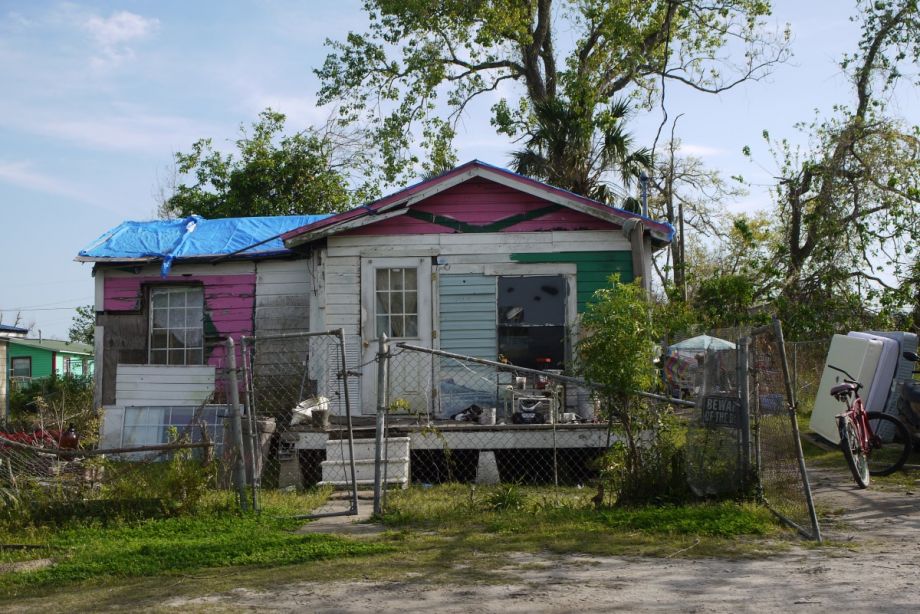
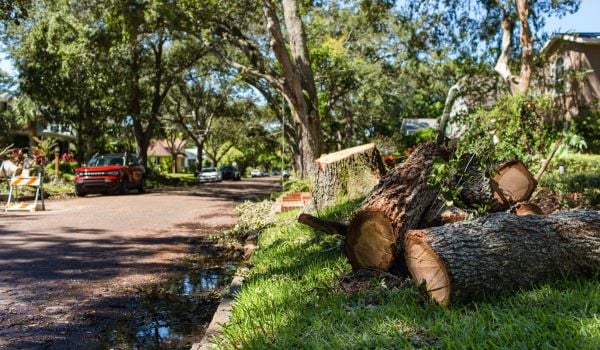
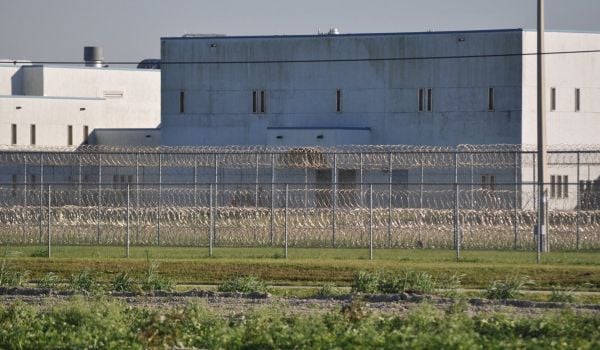


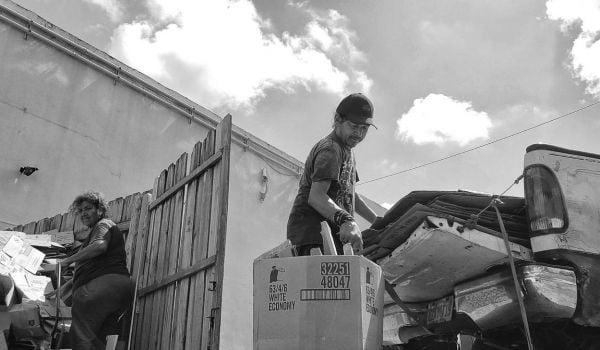
_1200_700_s_c1_600_350_80_s_c1.jpg)
